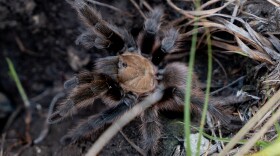-
Artificial intelligence could help scientists and state conservationists count waterfowl more quickly and accurately, according to a new study.
-
Halloween is a time to celebrate creepy, crawly animals. This year, St. Louis scientists hope to inspire appreciation for Missouri’s largest spider: the tarantula.
-
The Bradford pear is an invasive species that grows so quickly it can displace Missouri’s native wildlife. Local organizations are offering free native trees to Missourians who remove an invasive pear tree.
-
Dry conditions and high winds have led to wildfires across Missouri. So far, there have been no reported injuries, but structures and vehicles have burned.
-
Extra hunting seasons are designed to help stop the spread of chronic wasting disease in deer, but a Missouri county was added to the list where it has been confirmed.
-
The Missouri Department of Conservation is encouraging deer hunters to donate meat through its Share the Harvest program.
-
American burying beetles bring dead animals underground, turn them into preserved meatballs and feed them to their babies. The St. Louis Zoo is working to save the threatened beetle.
-
Scientists have uncovered surprisingly little about copperhead snakes. Until now.
-
A grant from the state helped local educators create a grassland prairie for students to learn about conservation at an Oakville elementary school.
-
Peanut is a notable example of how plastic pollution can harm wildlife — and how an individual animal’s story can be a powerful tool in promoting social change.
Play Live Radio
Next Up:
0:00
0:00
Available On Air Stations










